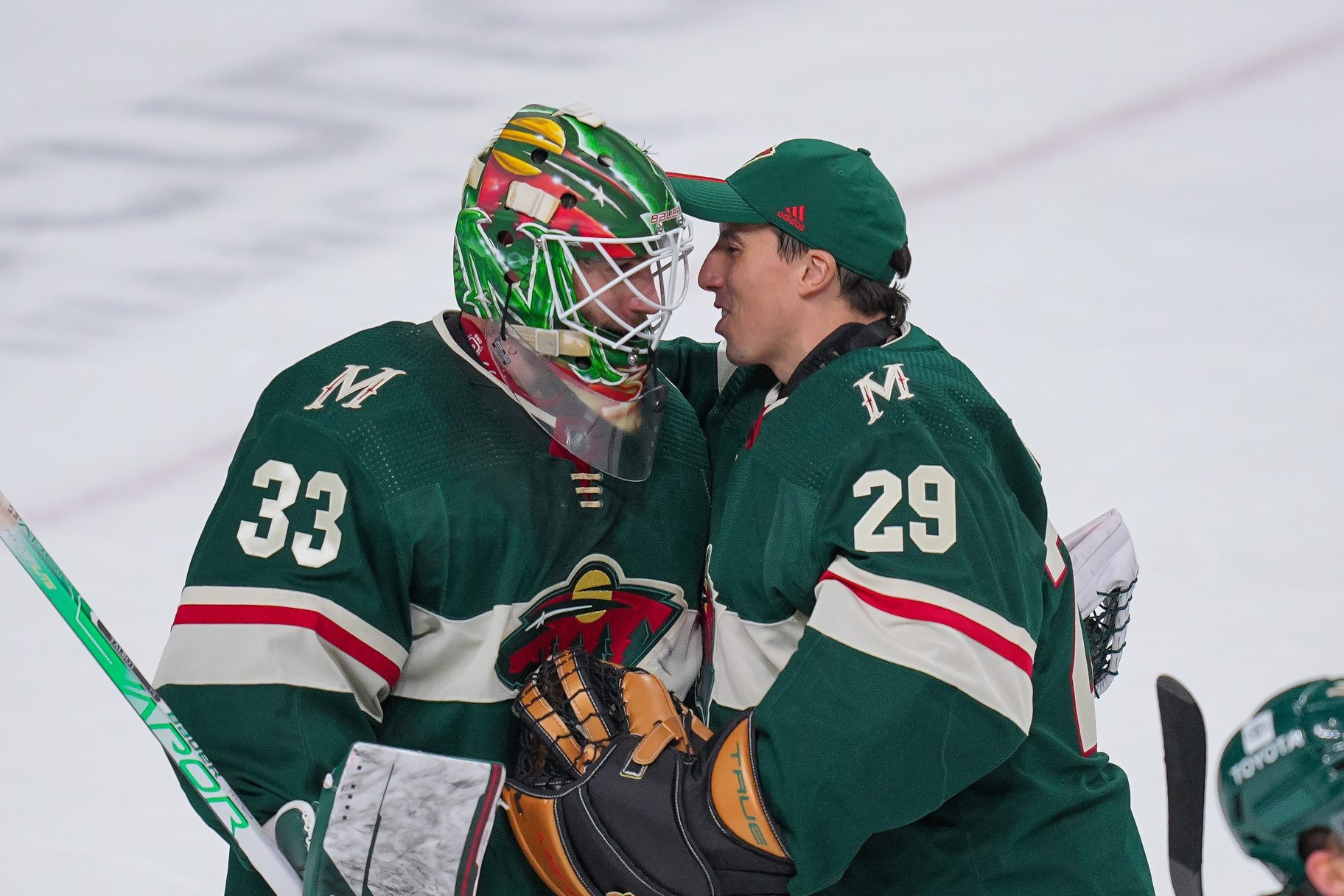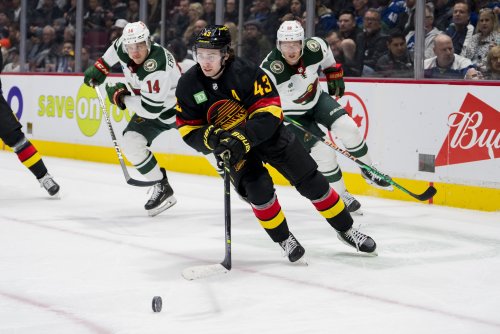
It’s time for Minnesota Wild general manager Bill Guerin to think outside the box again. Or the crease.
Following goaltender Cam Talbot’s up-and-down first half of the season, Guerin rightfully looked for an experienced, dependable option to go along with the Wild netminder in March. His trade for future Hall of Famer Marc-Andre Fleury was heralded as a savvy move, upgrading perhaps the best Minnesota Wild team in its history. What transpired was a complete flop in the first round, with much of the finger-pointing starting with the coaches and players in front of both goalies. While Fleury and Talbot weren’t to blame for the early exit, it doesn’t mean either should be the solution moving forward.
Guerin finds himself at a crossroads. The trade for Fleury was not the wrong decision, necessarily. Still, there are unintended consequences, and Guerin's already having to deal with the ripple effects. For starters, the only goalie under contract next season, Talbot, was clearly frustrated by the decision to start Fleury in the first round.
As he should be. Pro athletes don’t get this far by accepting they are second best. In his post-season presser, Talbot was as professional as could be, yet it’s hard to imagine he won’t spend the summer stung by his GM and coaches' decisions to replace him.
Then there is the matter of Fleury, an unrestricted free agent. Guerin has been vocal about his desire to re-sign his old Pittsburgh teammate to an extension. Evolving Hockey projects his contract to be two years at a $4.7M AAV. That’s a lot of money for a goalie who turns 38 this fall.
It may not even be a Fleury or Talbot decision for the Wild, as Guerin has noted a possibility of having both back next season as a true tandem. However, let’s hope he can get more creative than this, as there are far more appealing solutions to pursue.
Why? Well, to put it simply, neither Talbot nor Fleury were particularly good last season. Talbot’s Goals Saved Above Expected (GSAx) was an abhorrent -17.2, while Fleury didn’t fare much better, posting a -12.6 GSAx combined during his time with Minnesota and Chicago.
Sure, Fleury fared better following his trade deadline move, but still recorded a -1.3 GSAx in his 11 starts. Extrapolate that out to a projected 41 starts should the Wild go with a true tandem next season, and his pace was a less than desirable -4.8 GSAx. That won’t cut it on a $4.7M cap hit, and those results for a tandem next year counting against the cap at a potential $8.36M number would be devastating. For a team as cap-strapped as the Wild will be next season, you simply cannot allocate that many dollars to a position group underperforming at that rate.
Sure, either goalie could have a bounce-back season next year. But history tends to disagree. Goaltending becomes so much less consistent as players reach their mid-to-late 30s, and both goalies have proven that in their own careers.
Fleury has posted a negative GSAx in two of the last three seasons. In fact, they weren’t just negative, they were each double digits below zero. Sandwiched in there of course was his Vezina season in his last year in Vegas, making Fleury’s career arc a fascinating one. But was that a sign that he still has another season like that in him, or was it purely an anomaly? In 2022-23, which version of Fleury would the Wild get? Do they really want to spend $4.7M in cap space on the hope they get the good version of Flower? The odds say it’s not impossible, but it’s far more likely they would be overpaying for his production.
As for Talbot, his 30s have been a far cry from the rollercoaster version of Fleury, but not necessarily in a good way. The last season where he saved more goals than expected was his age-30 season in 2017-18. Since then he's changed teams three times and posted a negative GSAx in every season. This culminated in what was his worst season statistically as a goaltender this last season.
Again, similar to Fleury, Talbot has the chance to turn it around in his age-35 season, but history tells us it’s far more likely he continues to perform at a below-average rate.
Most of the season-ending discussions have revolved around whether the Wild will run it back next season with both Fleury and Talbot in net, or if they choose between one or the other. As the Stanley Cup Playoffs wrap up in the coming weeks, marking the beginning of the off-season work, one has to hope Bill Guerin has a more creative plan in mind. There are some intriguing options on the free agent market if the Wild choose to not allocate more than $8 million to their aging duo.
Casey DeSmith, Ville Husso, and Scott Wedgewood are some younger candidates who would fit their price range. Even trade candidates such as Anthony Stolarz in Anaheim or Alexandar Georgiev in New York could be intriguing, creative solutions for the Wild to better bridge the gap to when Jesper Wallstedt is ready.
The goaltending for 2022-2023 has so far been centered around their current goalies, but it’s clear Guerin has a number of better options to pursue, and he would be wise to do so.
Think you could write a story like this? Hockey Wilderness wants you to develop your voice, find an audience, and we'll pay you to do it. Just fill out this form.








Recommended Comments
There are no comments to display.
Join the conversation
You can post now and register later. If you have an account, sign in now to post with your account.
Note: Your post will require moderator approval before it will be visible.